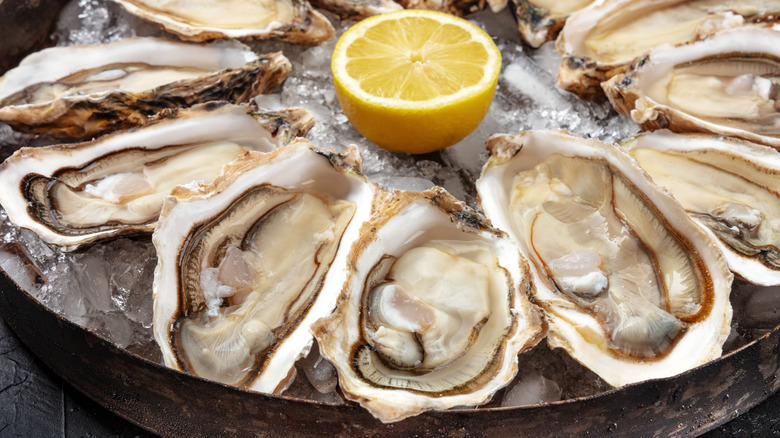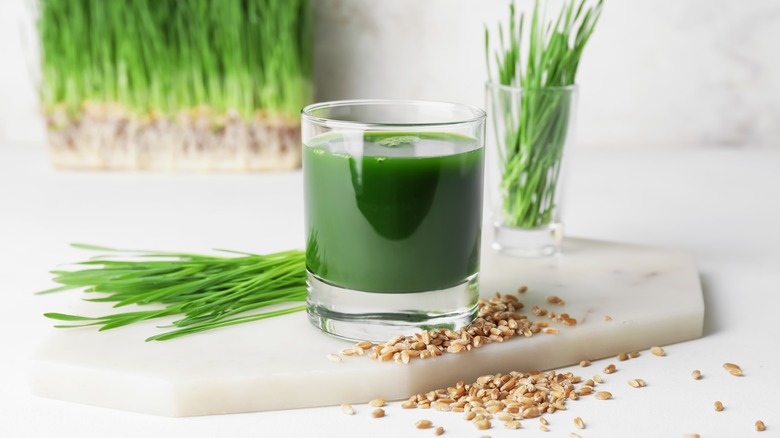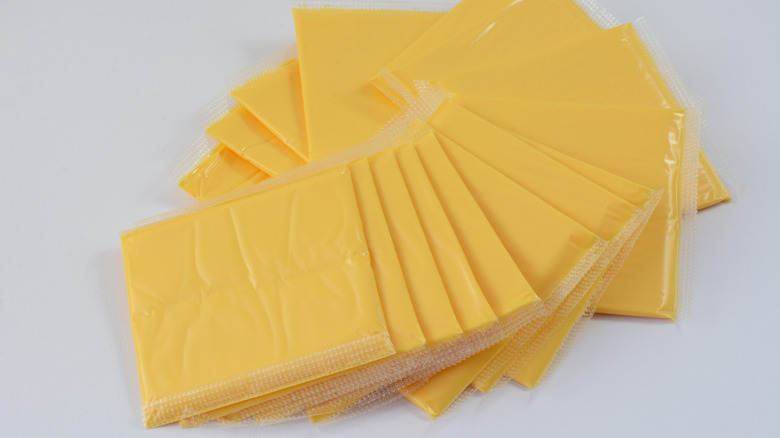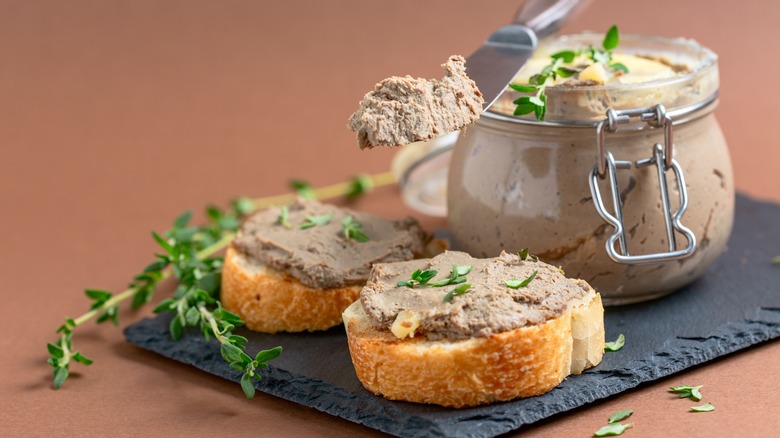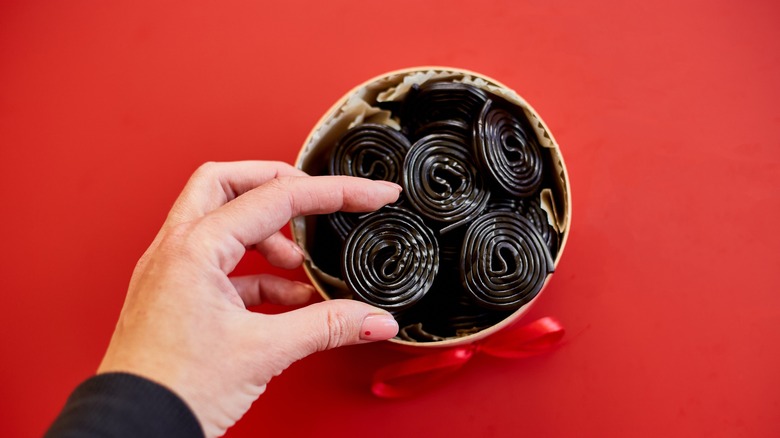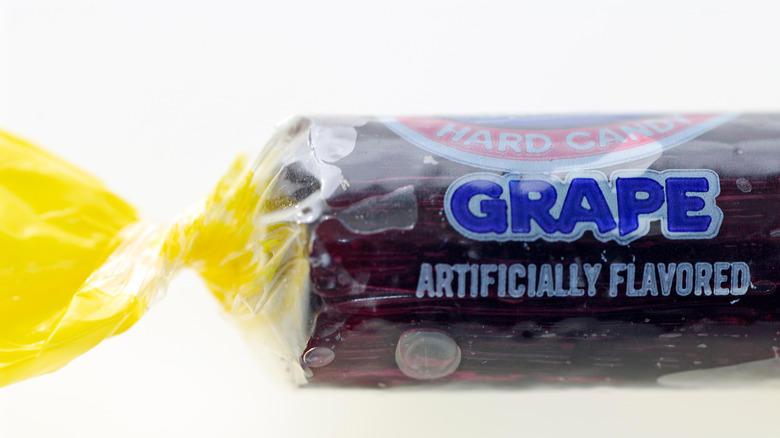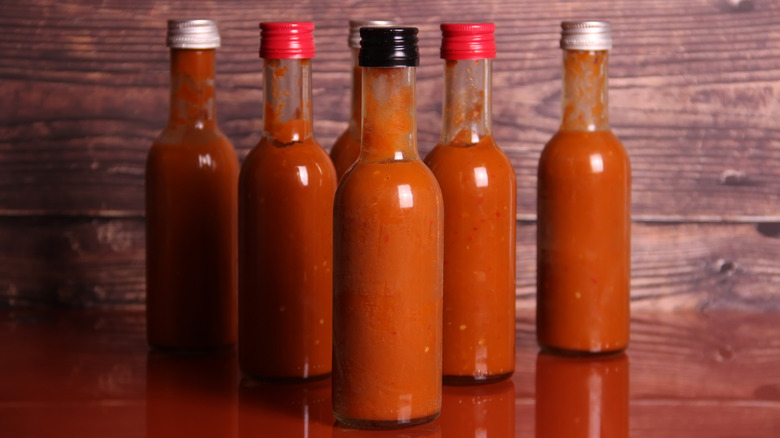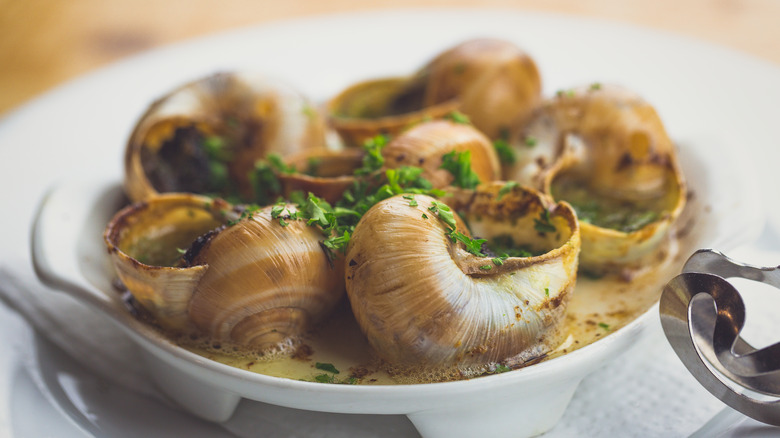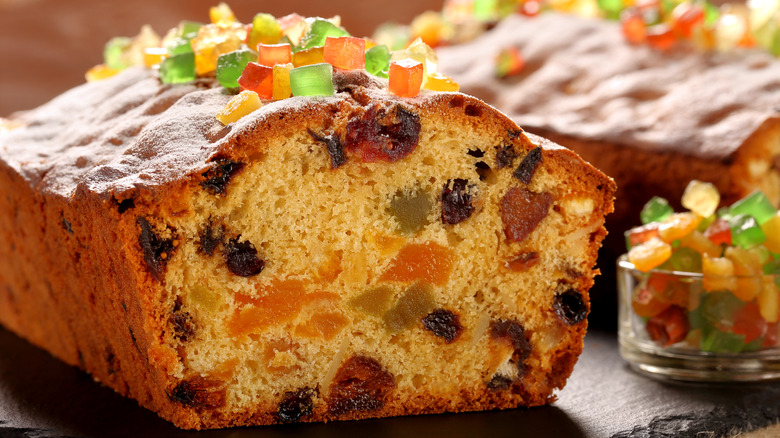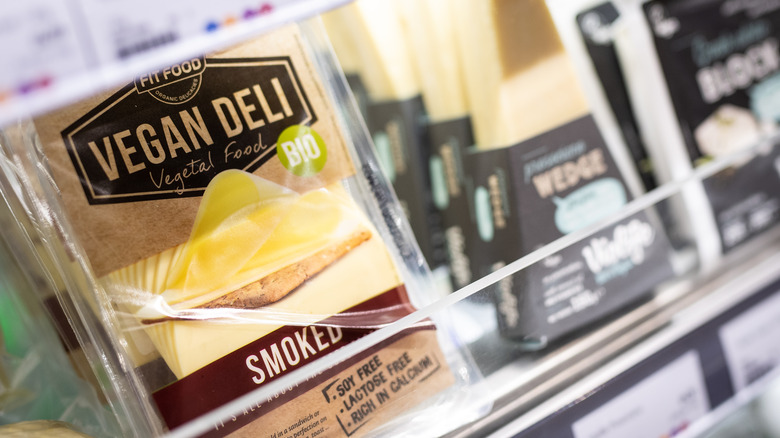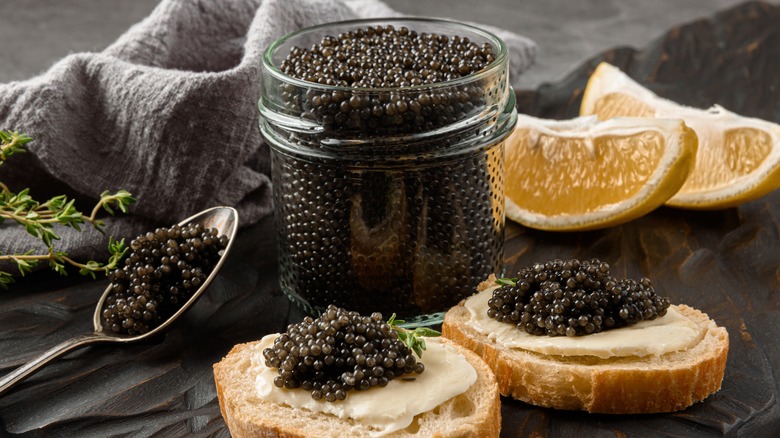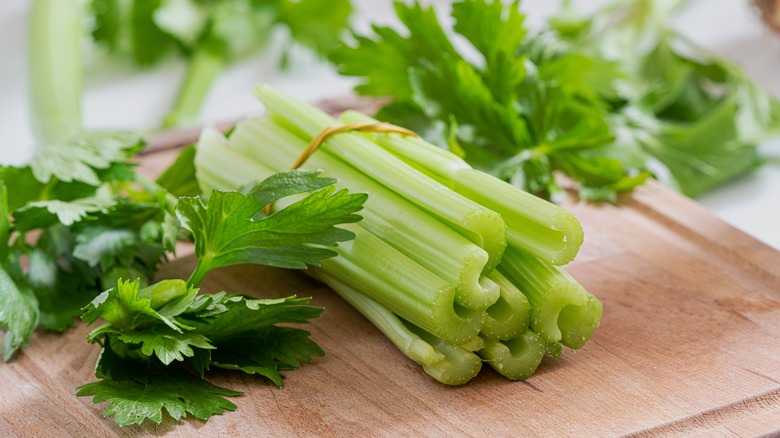13 Foods That People Only Pretend To Like
Have you ever tried a trendy new food only to discover it tastes horrendous? After all the hype, your expectations were high. But when you took that first bite, you immediately wondered 'who actually likes this?'
Perhaps no one. Enjoying some food items feels impossible, leading us to believe people only pretend to like them. After all, people are willing to hop on any bandwagon given the right circumstances. In a 2015 study published in Political Behavior, participants were asked opinion-based questions and then told what others believed. Most changed their views to align with the majority and held onto these new beliefs going forward.
And when everyone seemingly likes something, we give that opinion more credibility. If we want to get fit, we try that new fad diet. If food is deemed luxurious, we want it more (we all remember the overpriced avocado toast trend). But, unfortunately, others' opinions can't make food taste better. We say trust your tastebuds, not the popular vote. So if you're curious about which foods we're referring to, keep reading to learn about 13 foods that people only pretend to like.
1. Raw oysters
We want to like raw oysters, we really do. This cold appetizer is associated with romantic dinners, beachside holidays, and luxury. The expectation is that you should be overjoyed to eat this delicacy. But as much as people want to love them, some just don't. Perhaps, ultimately, because raw oysters taste a lot like where they came from — the ocean.
Those who pretend to enjoy this slimy mollusk might also preach about its aphrodisiac qualities. However, what we think we know about oysters might not be entirely accurate. There is no scientific evidence proving oysters are aphrodisiacs. Yes, they're full of healthy nutrients like zinc, iron, and B vitamins, which can ultimately lead to increased dopamine and testosterone levels (via Healthline); but whether oysters can directly increase desire is still up for debate.
Reputation aside, it's hard to believe people genuinely like this food. On Reddit, one user summed it up nicely, saying, "Oysters are terrible seafood, and I'm tired of pretending they're not. It's cold, slimy, and tastes like seawater. I don't understand how they've become a 'luxury' food. No amount of seasoning, sauce, or fancy joux will change the fact that they're just water filters for the ocean."
2. Wheatgrass juice
Juice bars are popping up all over the country, with many carrying wheatgrass. And while some people add wheatgrass into juice blends, others drink it like a shot, which isn't surprising. The intensely bitter, earthy beverage isn't exactly palatable. The faster it goes down, the sooner it's over. People don't necessarily sit and sip a tall glass of wheatgrass juice slowly because, quite frankly, it isn't enjoyable. In fact, Jen Hubley Luckwaldt at Prevention noted, "I severely underestimated how gross it was."
So why do people pretend to like the stuff? Well, wheatgrass does have many health benefits. According to WebMD, one serving of juice has 22% of the daily recommended iron and 15% of the recommended vitamin C. A 2015 review in Medicinal Chemistry even discussed how wheatgrass can be beneficial in cancer prevention and overall immune function. Plus, its rich green color comes from chlorophyll, which is all the rage in detox diets.
Science consistently supports the health claims of this grassy beverage. But let's get one thing straight; just because something's healthy doesn't make it delicious. Chances are, people don't actually like the drink — they just like what it can do for their bodies.
3. American cheese
American cheese is inferior to pretty much all other cheeses. Its plastic appearance and waxy texture make us question whether it's cheese at all.
So what exactly is American cheese? Kraft American Cheese Slices are labeled as a "cheese product" rather than just "cheese." This word choice is deliberate (and required by law). According to the Food and Drug Administration, foods labeled as cheese must consist of at least 51% cheese, which is formed from milk curds. Therefore, cheese products — American cheese included — have less than that. And although Cheddar cheese is the first ingredient listed on Kraft singles, it's followed by a whole host of additives that contribute to the cheese's unnatural color, texture, and shelf life.
But even though it's not technically a real cheese, American cheese is everywhere. You'll often see these slices on fast-food burgers or sandwiches. Because American cheese is highly processed, it's also highly reliable. It comes presliced and is the ideal size to add on top of meat patties or between two slices of bread. Plus, it's cheap when compared to real cheese. But convenience aside, nothing can make up for its lackluster taste and questionable texture.
4. Paté
The name sounds fancy, and the texture isn't terrible. Still, paté is usually just blended liver with herbs — which is off-putting for most Americans.
In European countries, eating organ meats is common. Liver is often on the menu, and paté is a typical appetizer. But in the United States, organ meats never really caught on. We love the muscles and fat of animals but discard the rest, and most people wouldn't even know how to cook liver. For a brief period in World War II, people were encouraged to reduce waste, which meant consuming more intestines, liver, kidneys, and the like (via the Journal of Public Policy and Marketing). However, this trend didn't stick, and most Americans grimace at the thought of eating offal today.
Unlike other organ meat products, paté has a more highbrow connotation, and when eaten on accident, Americans might love the food. Its smooth texture and meaty flavor are delectable over crispy toast. But as soon as people recognize what this spread is made of, they're often turned off. So even if Americans want to like paté, it seems they can't overcome their own bias.
5. Black licorice
In the candy world, nothing is quite as divisive as black licorice. While the flavor is hard to describe, it's far too easy to recognize. This herbal, bittersweet taste is like no other and lingers in your mouth long after the licorice is gone.
Unlike its red counterpart, it may be hard to imagine anyone loving black licorice. But those that do can't seem to get enough. In fact, in 2017, the FDA issued a warning urging kids to go easy on the stuff (via CNN Health). You see, licorice has a chemical called glycyrrhizic acid. When consumed in excess, it can throw your electrolyte balance off, raising potassium levels which, when high enough, can lead to cardiac arrest (via Rutgers University). This claim sounds outlandish, but one man actually landed himself in the hospital with electrolyte disturbances after consuming excessive amounts of licorice, according to The New England Journal of Medicine. So, not only does the stuff taste bad to many people, but it should really come with a disclaimer.
6. Grape-flavored anything
If you're working your way through a bag of fruit-flavored candies, expect grape to be at the very bottom. Of all the fruit candies, it's known for having the worst artificial flavor. It's no surprise that in a 2017 survey of the most popular Halloween candy flavors, (via Statista), grape got a mere 5.5% (losing only to lime). Cherry ranked the highest with 21.1%, followed by strawberry and watermelon. So if you notice these flavors disappearing from the candy jar first, it's no accident. They were, indeed, cherry-picked.
Artificial grape is notorious for having a fake taste, however, this has more to do with history than with poor chemistry. Scientists first created grape essence in the 1890s after isolating the chemical methyl anthranilate. They noticed its smell bore a strong resemblance to real grapes, and as it turns out, this chemical is actually found in natural grape juice — but not the red or white grapes we're used to. Back then, most Americans consumed purple Concord grapes, which have a more jelly-like texture than the varieties we know today.
But although this grape flavor seems unbearably sweet, people aren't above eating it. Candy is still candy, and when all the other flavors are gone, they'll inevitably make their way to the bottom of the bag — no grape left behind.
7. Super spicy hot sauces
Do people actually like super spicy hot sauces, or is it merely a masochistic addiction? When hot sauces have too much heat, we have trouble believing anyone can enjoy it. It's less about the flavor and more about the sensation.
The active compound in chilis, capsaicin, sets off pain signals in your brain. Although you're only eating a spicy condiment, your brain reacts as if your tongue is on fire. And when our bodies sense physical pain, they counteract it by releasing endorphins, so you feel pain followed by pleasure. We can see why eating hot sauce may be addicting.
But over time, people become desensitized to the level of capsaicin in food. They need more and more to satisfy that craving until, ultimately, it's not about the sauce at all but the chain reaction it creates in the body. Would people love ridiculously spicy hot sauces if it weren't for their addictive quality? Probably not.
8. Escargot
Escargot is the fancy French term for common garden snails that have been farmed, purged, and removed from their shells. After being cooked, they're often returned to their shells to create that wow factor on your plate, which they definitely do.
We're not used to eating snails. You've probably stepped on more snails than you've eaten, which is an equally atrocious experience. As you feel your shoe smushing down against the gooey glop of a snail, you can imagine what it would be like to eat one. It's just as rubbery as you'd think.
So why are people even pretending to enjoy escargot? It could be due to the snob effect. Not everyone is out there gobbling up snails by the handful; there's an exclusivity to escargot. The dish is typically only served at high-end French establishments where chefs know what they're doing. And often, they're dousing the snails in irresistible amounts of butter and garlic. But sans novelty, fat, and added flavor, we're hard-pressed to believe anyone enjoys eating snails.
9. Chicken breasts
People claim to love chicken breasts because they're versatile. You can cook chicken breasts in many ways, from stir-fries and sandwiches to simply tossing them on the barbecue. It doesn't take a professional chef to cook one, which makes it an approachable dish. Fitness fanatics also love them as a source of affordable, lean protein. But ease and nutrition aside, does anyone actually like chicken breasts?
We feel they are an overrated piece of poultry. Thigh meat has far more flavor, yet chicken breasts get all the attention. When cooked on their own, breasts are bland. It's no wonder people obsess over the seasonings, sauces, or condiments that go with chicken. Imagine stomaching a chicken breast without them. This cut of meat is also super easy to overcook, leading it to be dry and tough.
None of this sounds appealing to us. And we're fairly sure you might just be hiding your distaste for chicken breasts under a plethora of seasonings.
10. Fruitcake
Fruitcake is a dense, crumbly pastry. The seasonal cake is only slightly sweet and contains nuts and dried or candied fruits. Original recipes have alcohol soaked into the cake, but store-bought varieties are almost always alcohol-free. Resembling either a loaf of bread or a round cake, these pastries are heavy both physically and on the belly.
The combination of sugar, dryness, and potential alcohol means these cakes have an incredible shelf life. So much so, in fact, that conservators with the Antarctic Heritage Trust found a fruitcake belonging to the explorer Robert Falcon Scott from his failed 1910 expedition. Although the fruitcake is over 100 years old, according to The New York Times, the trust said it's in "excellent condition" and "almost edible." This last descriptor pretty much sums up how we feel about most fruitcakes.
If a fruitcake doesn't make it into your home come Christmastime, a fruitcake joke certainly will. Because these pastries last so long, there may only be one circulating in the entire country (joking). And when it's gifted to your family, you may smile and say thank you, but you're secretly plotting how to pass it on before the holidays are over.
11. Vegan cheese
Vegan cheese just doesn't taste like the real thing. Some brands taste chalky or feel as if they're disintegrating in your mouth. Others might have a decent flavor but won't melt properly. This is because dairy cheese is made from animal milk containing a protein called casein. When heated, the casein breaks down to create that stretch and melt we love from cheese (via the Wisconsin Center for Dairy Research). However, vegan cheeses lack this animal protein, and instead of melting, they just seem to get hotter.
It's no secret people love real cheese, but why are others pretending to like the vegan version? One long-term vegan on Quora describes their experience, "Many vegan cheeses taste like the memory of cheese when you haven't had cheese for a long while. They are salty, somewhat umami, and somewhat creamy. They hit the same neighborhood of flavor but aren't at the same address. Don't try to substitute cheese for a while after you go vegan...you need your brain and taste buds to somewhat forget the nuances of cheese."
It's all about how you approach vegan cheese. Perhaps it's best to adjust (or lower) your expectations. If you're going to eat it, don't think of it as cheese, think of it as what it really is: a nut or oil-based product that bares a resemblance to cheese — but still falls short.
12. Caviar
Caviar is made of sturgeon fish eggs that have been salt-cured. As if fish eggs weren't salty enough, caviar takes it to the next level. Like sushi roe, caviar consists of tiny, round eggs that pop as you bite them. A little bit goes a long way, so this spread is served atop simple foods like crackers and cream cheese to not overwhelm your palate.
While this description doesn't sound all bad, we can't help but think most caviar is overrated. Sure, if you spend $100 on a tiny jar, it's bound to taste amazing. High-end brands are smooth and buttery, but even good caviar can be an acquired taste. And since most of us can't afford quality caviar, it's unlikely we'll learn to like it anytime soon. In reality, most affordable brands are more fishy than desirable.
So what's all the hype about this fishy food? Well, caviar is the perfect example of a Veblen good, a good whose demand increases as its price does because it's seen as a luxury item or status symbol. So while many people may pretend to like caviar, what they really like is the prestige.
13. Celery
Celery is everywhere, but do people just eat it because it's a healthy vegetable? Celery does have a super-low glycemic index and contains antioxidants, minerals, and vitamins (via Healthline); but aside from its health benefits, we can't find any redeeming qualities about the food.
In small bites, it's tolerable, but on its own, celery is bitter, watery, and stringy. When you bite into a stick, your teeth fight with the stalk to break apart its tough, chewy strings. Plus, the flavor is somehow both bland and bitter. On Reddit, one user describes their distaste for the vegetable, "It's like bitter cucumber. Instantly [after] the first bite, your mouth just feels bitter, and the texture is terrible. Not even ranch can save celery." Another commenter added, "it's mildly soap-tasting."
While some people admit to disliking celery, most people keep on eating the stuff. We're convinced they've been dutifully eating it since childhood, knowing it's good for them. However, there are far better vegetables out there. We feel life's too short to be wasting that precious appetite on celery.

